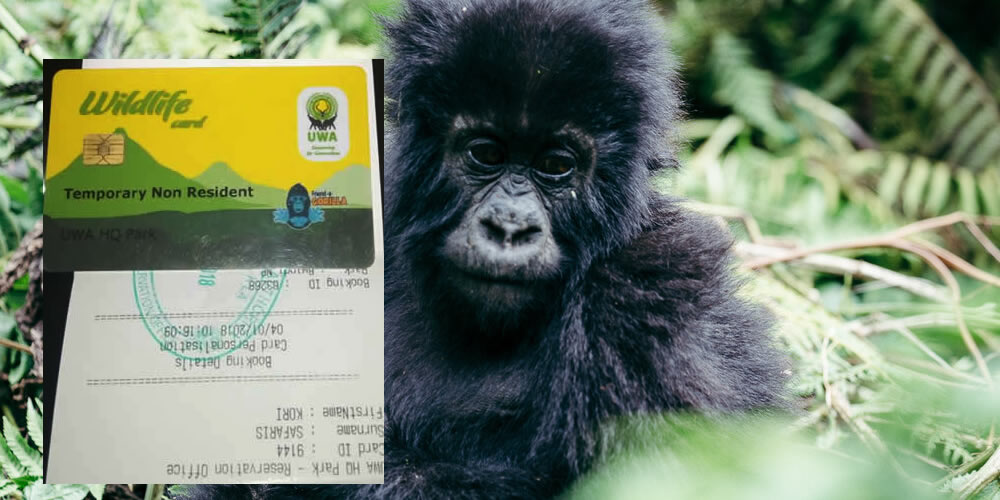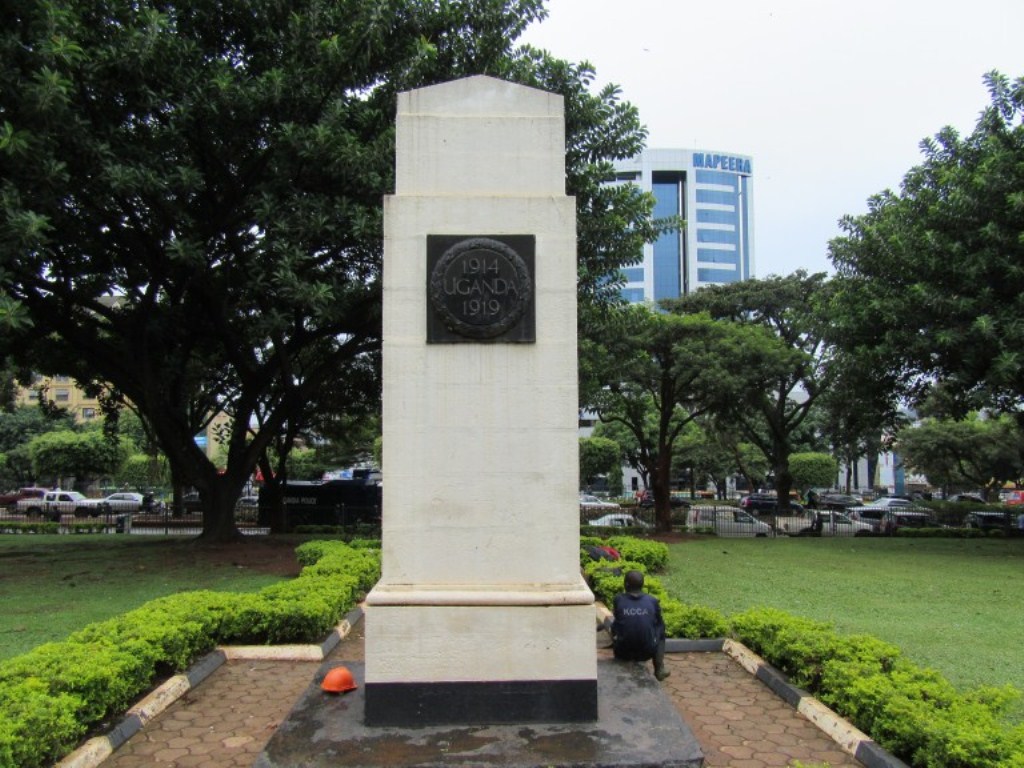
Monuments in Uganda.
Monuments in Uganda.
Monuments in Uganda : Uganda was conquered by the Britain around 1890’s, Captain Frederick Lugard, the governor of Imperial British East African Company (IBEAC), raiUganda sed the Union Jack (British Flag) at a fort he established on Old Kampala hill (Fort Lugard), and declared Uganda a British protectorate. From that point on, the British government owned and all of its wealth. Indigenous people didn’t have much or any say in how their country would change. After Uganda got its independence, memorials were built. Here are some of Uganda’s most famous landmarks/monuments to see on Uganda Safaris Tours.
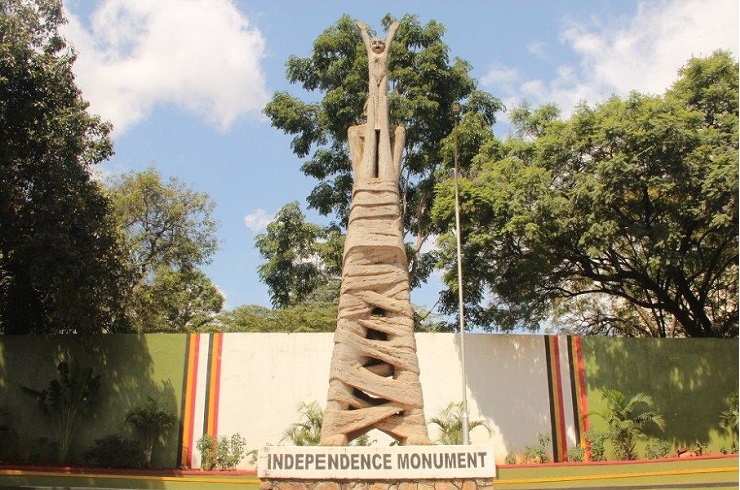
When Uganda became independent in 1962, it was met with happiness and joy. Everywhere in the country, people sang songs of joy and celebration.
Gregory Maloba built a monument to freedom to show that Uganda was now on its own. It was put in place a few months before the event on October 9, 1962. A huge, tall piece of concrete art is symbolic, and it has more than one meaning.
It shows a woman standing on the ground while holding a baby in the air. A rope is wrapped around her body, and she looks at the little boy she is holding, who raises his hands in victory. The woman is like the country of Uganda, which stands on a strong base. The woman’s loose body shows that she is free from the shackles of empire.
In her book Art in Eastern Africa, Marion I. Arnold says that the figure of a woman with a child that grows from the ground like a huge forest tree represents the home. The mother is strong because both of her legs are firmly established on the ground. Meaning: Uganda has been there for a long time and won’t move anytime soon. If there are holes in the binding, it may mean that the connection between the colonial masters and their subjects has become weaker. But more specifically there, is an allusion to the stress of independence euphoria under which the sculpture was made. As her bonds fall away, Mother Uganda holds aloft a joyful new born child of independence. The Independence the monument is on Speke Road, right next to the Sheraton Hotel Kampala’s wall fence. It’s open at any time of the day or night for viewing, photography, and several good purposed reasons.
Sir Edward Mutesa 1 Monument.
Sir Edward Frederick William David Walugembe Mutebi Luwangula Muteesa II was the King of Buganda Kingdom from November 22, 1939, until his death on November 21, 1969. He was born on November 19, 1924, and died on November 21, 1969. He was the thirty-fifth Kabaka of Buganda and Uganda’s first President after the country got rid of the British.
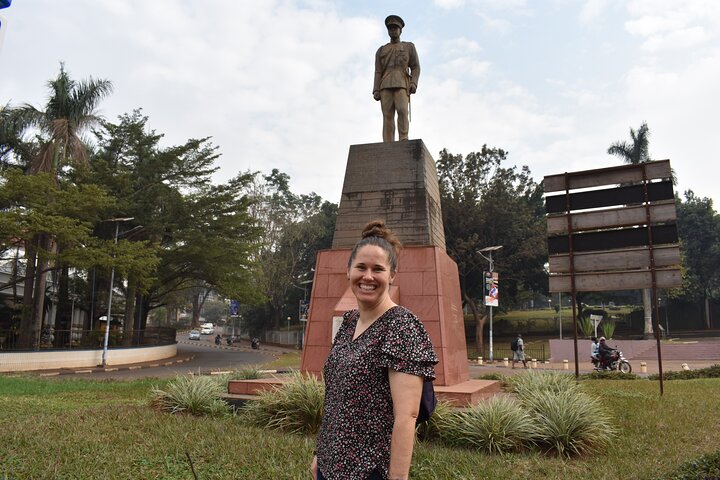
A statue or monument was built at the Speke road and Nile Avenue at the junction close to the Uganda Independence monument. This monument was built to honor Sir Edward Mutesa II, who was the first president of an independent Uganda and the 35th King of the Kingdom of Buganda. He did a lot to help Uganda get its independence, which is why this monument was built. This Monument was opened in 2007 by the present Kabaka of Buganda, Ronald Muwenda Mutebi.
World War Memorial Monument.
On the back of a 5,000 Uganda shillings note is a picture of Ugandathe World War Memorial Monument, which is a memorial to those who died in World War II. Next to the central police station in Kampala is one of the oldest statues in the city. World War II was a scary time for everyone, and all of the foreign masters asked their people to help them win the war. For example, Britain asked for help to join forces and fight the other side. This led to the deaths of many Ugandans who had gone to help the British forces. In 1945, the British colonial government built the World War Memorial Monument, which is also on the back of the 5,000 Uganda shillings note for World War I and II.

Centenary Monument.
This is in the well-known Centenary Park on Jinja Road, not far from Hotel Africana. It celebrates 100 years of the Kampala City Council, which is the group that runs Kampala City. Sylvia Katende, an artist at Makerere University, made this piece, which is up to 6 feet long.
Statue of Leadership.
This is in front of the Amber House on Kampala Road. It is a memorial to the day that Kampala got power. Sir Apollo Kaggwa was the Prime Minister of the Buganda Kingdom from 1890 to 1926. He is shown in the sculpture. He is celebrated for having promoted for the extension of electricity and purified water to the Kingdom of Buganda amid critics from the local Baganda who thought he was wasting time on unnecessary things instead of requesting for gold and guns. The 7 feet monument was created by Electricity body with a hand from National Water and was uncovered in 2002 by the then Minister of Energy Hon. Saida Bbumba.
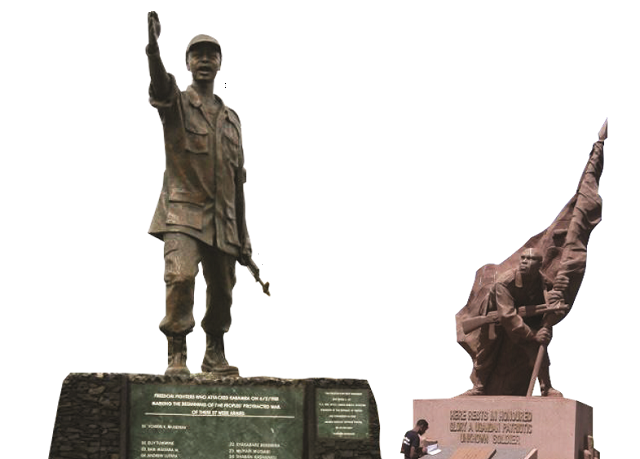
Education monuments.
Multiple Institutions of learning including Universities and colleges contain monuments depicting the role of education. Kyambogo University had a monument with three kids struggling to touch a book and it was put up in celebration of 100 years of the education sector in Uganda. Kintu Musoke showed the statue to the public in 1996.
In front of the college of Natural Sciences at Makerere University is a monument called “Hatching a new generation.” It shows how the academic world in Uganda is getting a new start with the opening of many new schools, like Makerere University, which has been around for a long time.
The stride monument.
This is one of Uganda’s monuments. It is between the Kampala Serena Hotel and the Parliamentary grounds. It was built to honor the 2007 Common Wealth Heads of Government Meeting (CHOGM). It was found by the Queen of England, and so far it has cost 150 million Uganda Shillings, which is more than any other monument in Uganda. The works of the stride monument were done by a team of eleven professional sculptors under the command of Prof. George Kyeyune. The wife husband and son aluminum combination moving forward depicts that common wealth countries are developing together as a family.

Monuments in Uganda: Britain colonized Uganda in the 1890s. Captain Frederick Lugard, an administrator of the Imperial British East African Company (IBEAC), put up the Union Jack (the British flag) at a fort he built on Old Kampala Hill (Fort Lugard) and made Uganda a British protectorate. From that point on, the British government owned Uganda and all of its wealth. Indigenous people didn’t have much or any say in how their country would change. After Uganda got its freedom, memorials were built. Here are some of Uganda’s most famous landmarks to see on Uganda Safaris Tours.



